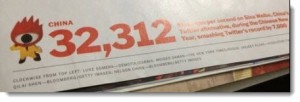This is Part 1 of a 3-part post on
“Is Collaboration a Dirty Word?”
With memories of some well-conceived collaborative projects from my own graduate studies programs still fresh in my mind, I have something to add to the “New Groupthink” discussion surrounding a recent NY Times article written by Susan Cain (“The Rise of the New Groupthink,” Sunday Review, Jan. 15). In this controversial article Ms. Cain writes that it’s ‘highly likely’ that the most creative people (she cites mainly computer programmers and Picasso-like artists) are introverts; and that if we want students to learn, educators better leave them to themselves and their creativity. She argues: “research strongly suggests that people are more creative when they enjoy privacy and freedom from interruption, and the most spectacularly creative people in many fields are often introverted.” She then goes on to cite two such researchers, psychologists Mihaly Csikszentmihalyi and Gregory Feist who claim to be “extroverted enough to exchange and advance ideas, but see themselves as independent and individualistic. They’re not joiners by nature.” While it’s not a stretch to believe that many researchers do see themselves as ‘independent and individualistic’ since these particular researchers are said to be ‘extroverted enough to exchange and advance ideas,’ that should end the negative stereotyping about collaboration right there. But why shouldn’t we as educators be thinking that excellent models of creative collaboration make for an exceptional learning environment?
While I’m still scratching my head about the stretch Cain makes in aligning genuine collaboration with ‘groupthink,’ I’ll acknowledge her audacity for maligning teamwork, innovation, creativity, brainstorming and public school collaboration all in the same commentary. I admit I was initially disheartened by Cain’s claim that while “SOME teamwork is fine and offers a fun, stimulating, useful way to exchange ideas, manage information and build trust,” solitude is seen as the way to ‘achieve creativity and transcendence’ in our society. To budding artists, inventors and engineers she counsels: “I’m going to give you some advice that might be hard to take. That advice is: Work alone… Not on a committee. Not on a team.”
Fortunately her threat of “The New Groupthink” engulfing “our companies, our schools and our culture” didn’t make me stop what I’ve been doing here at Lehman for the past 2 years to declare teamwork a dying pedagogical strategy. In my role as faculty developer I follow the lead of professors who want to add hybrid course planning to their strengths as lecturers. Hybrid, or blended courses are courses wherein 33-67% of instruction occurs online and the rest in-person, so our attention also focuses heavily on collaboration as a tool to build community in the somewhat isolating space of online learning. Learning and developing through boundary-crossing activities is an important concept in transformative pedagogy as well as some forms of project-oriented learning instructional design models. Vygotsky’s Zone of Proximal Development (ZPD) describes the difference between what a learner can do independently and what can be accomplished cognitively with scaffolding from more knowledgeable others including peers. His work emphasizes the deliberate use of discourse and cooperative learning in the classroom and theories of assistance or scaffolding to help students learn.
Most of the educators I’ve worked with have naturally gravitated to offering a combination of collaborative work and independent study but have struggled with coordinating the two online into a cogent package that rings true with their students. The buy-in they need to offer their students comes from Lawrence H. Summers (What You Really Need to Know, January 20, New York Times) who speculates on the future of undergraduate education: “Suppose the education system is drastically altered to reflect the structure of society and what we now understand about how people learn?” He reminds us that “most companies look nothing like they did 50 years ago” so why should education?
One predictable outcome of the ubiquitous access we have to this knowledge, he says, “is that tasks will be carried out with far more collaboration.” He cites that co-authored economics papers have doubled in the last 30 years of his career, so students who set their sights on academics certainly need to become more involved in the collaborative journal article process in their undergraduate years. But the simplest bombshell he throws in the direction of Ms. Cain’s argument is that far from cultivating loners, for the benefit of our country’s workforce “collaboration is a much greater part of what workers do, what businesses do and what governments do.” He reminds us that for most people, school will be “the last time they are evaluated on an individual effort.” While the words ‘last time’ takes the notion of being individually evaluated too far, he does illustrate a growing business practice in investment banking and elsewhere: at one investment bank in particular, the hiring process requires candidates to interview with upwards of 60 members of the firm who determine their ability to work well with others before an offer is made, so clearly a priority for communicating with and to one another is a growing priority!
Ms. Cain’s sweeping generalizations speak to “the most spectacularly creative people” who “are often introverted,” and “are comfortable working alone,” but discount the many other learning styles that comprise today’s classrooms. Summers notes that not enough students are “asked to actively use the knowledge they are acquiring” and he calls for “active learning classrooms” — that group students around portable technologies — to “help professors interact with their students through the use of media and collaborative experiences.”
Paul Hawkin, author of Natural Capitalism states that ‘good management is the art of making problems so interesting and their solutions so constructive that everyone wants to get to work and deal with them.’ If classroom collaboration stressed the ‘interesting’ and ‘working together’ part of working together toward a common goal, there might be more positive constructive things to say about collaboration, and the argument would be about ‘how’ rather than ‘whether’ we as educators need to actively engage students by playing to their passions.
If I were offering students advice about the next ten years I’d counsel them this way: “I’m going to give you some advice that might be hard to take. That advice is: Do not focus your energies on working alone… Join a committee. Manage a team.”
Author’s note: Author Dan Pink will be interviewing Ms. Cain this Friday January 27 via iTunes: Office Hours is a radio-type program, available on iTunes.
You can listen in live, and ask a question, by calling (703) 344-2171 at the appointed day and time — and entering this passcode: 203373.






